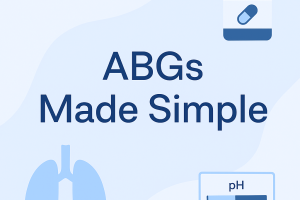Labor and Delivery: Essential Knowledge for NCLEX Preparation

Labor and delivery are critical events in the childbirth process, and understanding the stages, complications, and nursing care involved is essential for providing safe and effective care to mothers and newborns. As an NCLEX candidate, you need to be familiar with the physiology of labor, pain management options, possible complications, and appropriate nursing interventions during delivery.
This blog post covers the key concepts related to labor and delivery, as well as NCLEX-style questions to help you prepare for the exam.
Stages of Labor
Labor is divided into four stages, each with its own characteristics and nursing care requirements.
1. First Stage: Onset of Labor to Full Dilation (10 cm)
- Early Labor (Latent Phase): Cervical dilation 0–3 cm. Contractions are mild to moderate, and the patient may feel excited or anxious. This phase can last several hours.
- Active Labor: Cervical dilation 4–7 cm. Contractions become stronger, more regular, and more painful. The patient will require support and pain management.
- Transition Phase: Cervical dilation 8–10 cm. Contractions are intense and frequent. This is the shortest but most intense part of labor, and the patient may feel the urge to push.
2. Second Stage: Full Dilation to Delivery of the Baby
- Pushing Stage: The mother actively pushes, and the baby moves through the birth canal. This stage can last from a few minutes to several hours, depending on factors like fetal position and maternal fatigue.
- Nursing Care: Encourage the mother to push during contractions, provide comfort measures, monitor fetal heart rate, and prepare for the delivery of the baby.
3. Third Stage: Delivery of the Baby to Delivery of the Placenta
- Placental Delivery: The placenta is usually delivered within 5–30 minutes after the baby. The uterus contracts to expel the placenta.
- Nursing Care: Monitor for signs of placental separation, ensure the placenta is intact, and monitor for excessive bleeding.
4. Fourth Stage: Recovery (1–2 hours after Delivery)
- Postpartum Monitoring: During this stage, the focus is on stabilizing the mother and monitoring for complications such as hemorrhage or uterine atony.
- Nursing Care: Assess uterine tone, vital signs, and bleeding. Provide comfort measures and support breastfeeding if desired.
Nursing Care During Labor and Delivery
1. Pain Management
- Non-Pharmacologic Methods: Breathing exercises, relaxation techniques, massage, hydrotherapy, and changing positions.
- Pharmacologic Methods:
- Epidural anesthesia: Provides effective pain relief but may cause maternal hypotension.
- IV narcotics: Provide pain relief but can cause respiratory depression in the newborn if given too close to delivery.
- Nitrous oxide: A short-acting pain relief option that the patient self-administers during contractions.
2. Fetal Monitoring
- Intermittent auscultation: Monitoring the fetal heart rate at regular intervals.
- Continuous electronic fetal monitoring: Tracks the fetal heart rate and contractions continuously, helping identify signs of fetal distress, such as decelerations or bradycardia.
3. Maternal Monitoring
- Regularly assess maternal vital signs, uterine contractions, cervical dilation, and fetal position. Be alert for signs of complications, such as preeclampsia (high blood pressure), infection, or abnormal fetal heart rate patterns.
Common Complications During Labor and Delivery
1. Prolonged Labor (Failure to Progress)
- Definition: Labor that takes longer than expected. This may occur due to weak contractions, fetal malposition, or cephalopelvic disproportion (when the baby’s head is too large for the mother’s pelvis).
- Nursing Care: Administer oxytocin (Pitocin) to stimulate contractions, encourage position changes, and provide emotional support.
2. Fetal Distress
- Signs: Abnormal fetal heart rate patterns (e.g., late decelerations, bradycardia), meconium-stained amniotic fluid, or reduced fetal movement.
- Nursing Care: Administer oxygen, reposition the mother, discontinue oxytocin if being used, and prepare for possible cesarean section if the distress persists.
3. Shoulder Dystocia
- Definition: A situation where the baby’s shoulder gets stuck behind the mother’s pubic bone after the head has delivered.
- Nursing Care: Perform the McRoberts maneuver (flexing the mother’s legs toward her chest) or apply suprapubic pressure to assist in delivering the shoulder.
4. Umbilical Cord Prolapse
- Definition: Occurs when the umbilical cord slips out of the uterus ahead of the baby, cutting off the baby’s oxygen supply.
- Nursing Care: This is a medical emergency. Manually elevate the presenting part off the cord, place the mother in a knee-chest or Trendelenburg position, and prepare for an emergency cesarean delivery.
5. Postpartum Hemorrhage
- Definition: Excessive bleeding after delivery, often due to uterine atony (failure of the uterus to contract properly), retained placental fragments, or trauma during delivery.
- Nursing Care: Administer uterotonic agents (e.g., oxytocin), perform fundal massage to stimulate uterine contractions, and monitor blood loss.
Sample NCLEX Questions
Question 1
A laboring patient who is receiving an epidural reports feeling lightheaded and dizzy. What is the nurse’s priority action?
A. Increase the rate of the epidural infusion
B. Administer oxygen via face mask
C. Turn the patient on her left side
D. Check the patient’s blood pressure
Answer: D. Check the patient’s blood pressure. Epidural anesthesia can cause maternal hypotension, which may lead to dizziness and lightheadedness.
Question 2
A nurse is caring for a patient in labor who has experienced a sudden gush of clear fluid from the vagina. What should the nurse do first?
A. Notify the healthcare provider
B. Perform a sterile vaginal exam
C. Apply an external fetal monitor
D. Check the fetal heart rate
Answer: D. Check the fetal heart rate. A sudden gush of fluid indicates that the membranes have ruptured, and the priority is to assess the fetal heart rate to ensure there is no cord prolapse or fetal distress.
Question 3
During delivery, the healthcare provider asks the nurse to apply suprapubic pressure. What complication is the nurse assisting with?
A. Shoulder dystocia
B. Breech presentation
C. Fetal distress
D. Cord prolapse
Answer: A. Shoulder dystocia. Suprapubic pressure is used to help dislodge the baby’s shoulder from behind the mother’s pubic bone in cases of shoulder dystocia.
NCLEX Tips for Labor and Delivery
- Know the stages of labor: Understand the progression of labor and the key nursing interventions at each stage.
- Fetal monitoring is critical: Be familiar with normal and abnormal fetal heart rate patterns and the appropriate nursing actions in response to those patterns.
- Recognize complications: Study the signs, symptoms, and nursing care for common labor complications like fetal distress, shoulder dystocia, and postpartum hemorrhage.
- Pain management: Understand the different options for labor pain relief, their side effects, and when to use them.
Conclusion
Labor and delivery are complex processes that require careful monitoring, timely interventions, and comprehensive patient care. Understanding the stages of labor, common complications, and appropriate nursing care is crucial for passing the NCLEX exam and providing excellent care to mothers and newborns. By reviewing the content above and practicing NCLEX-style questions, you’ll be better prepared to handle labor and delivery questions on the exam.






